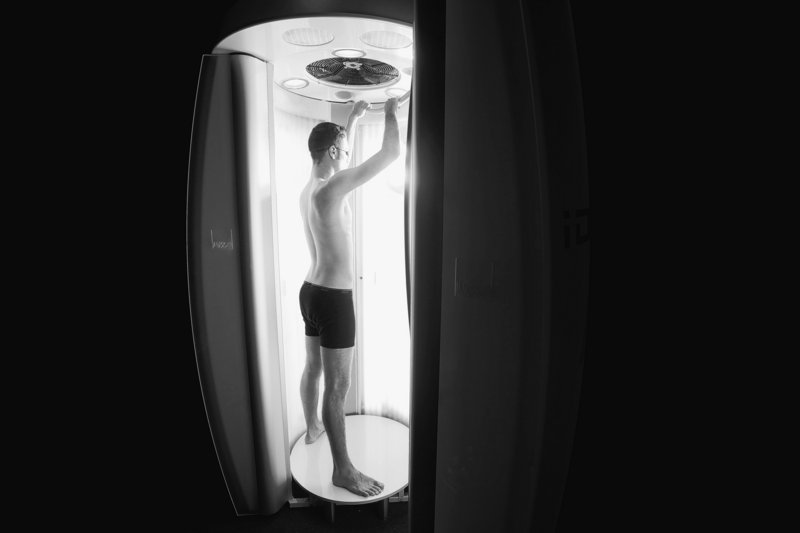LOS ANGELES – As many as a third of young people who use indoor tanning facilities may be addicted to the behavior, researchers reported Monday. The findings are the latest to suggest that tanning, whether natural or indoors, activates the same parts of the brain triggered by drug dependence.
The study screened college students using two standard questionnaires designed to assess addiction and modified to assess tanning behavior. Among 229 people who said they had used indoor tanning facilities, 39 percent met one measure’s criteria for addiction; 30 percent met the other measure’s criteria.
The tanners were aware that repeated exposure to ultraviolet light, either indoors or outside, increases the risk of several types of skin cancer, including the most dangerous type, melanoma, said the study’s lead author.
“They know it’s bad for them,” said Catherine E. Mosher, a postdoctoral research fellow in psychiatry and behavioral science at Memorial Sloan-Kettering Cancer Center in New York. “This is not about appearance. It’s for relaxation, to improve mood or to socialize.”
The study, released Monday in the Archives of Dermatology, also found that people who met the criteria for addiction had more symptoms of anxiety and had much higher rates of substance use than those in the study who didn’t tan excessively. Among people who never tanned indoors or were not seemingly addicted to the behavior, 17 percent said they had used two or more addictive substances (such as tobacco, marijuana or stimulants but excluding alcohol) in the previous month, compared with 42 percent of those who scored positive for addiction on both of the diagnostic measures.
“There might be a similar mechanism underlying substance-use behavior and tanning behavior,” Mosher said. “Both may be ways of coping with emotions. There may be similar processes in the brain involved that need to be uncovered.”
People who met the criteria for addiction had an average of 40 visits to a tanning salon in the past year, but some people made as many as 100 visits. More women than men participated in the study, but gender did not appear to be a factor in results.
In the first measure, from the Diagnostic and Statistical Manual of Mental Disorders-IV, addiction was defined as three or more positive answers to seven questions. On the other questionnaire — called CAGE, for Cut Down, Annoyed, Guilty, Eye-Opener — addiction was based on two or more positive responses to four questions.
While addiction to tanning may seem far-fetched, the participants’ responses showed the behavior had disrupted their lives.
Among those who scored positive for addiction, 78 percent said they had tried to cut down on the time spent tanning but couldn’t, and 78 percent said they felt guilty about using tanning beds or booths too much.
Further, 26 percent said that, when they wake up in the morning, they want to use a tanning bed or booth, and nearly one in four admitted that they had missed scheduled activities — social, occupational or recreational — because they decided to go to a tanning facility.
Send questions/comments to the editors.



Success. Please wait for the page to reload. If the page does not reload within 5 seconds, please refresh the page.
Enter your email and password to access comments.
Hi, to comment on stories you must . This profile is in addition to your subscription and website login.
Already have a commenting profile? .
Invalid username/password.
Please check your email to confirm and complete your registration.
Only subscribers are eligible to post comments. Please subscribe or login first for digital access. Here’s why.
Use the form below to reset your password. When you've submitted your account email, we will send an email with a reset code.